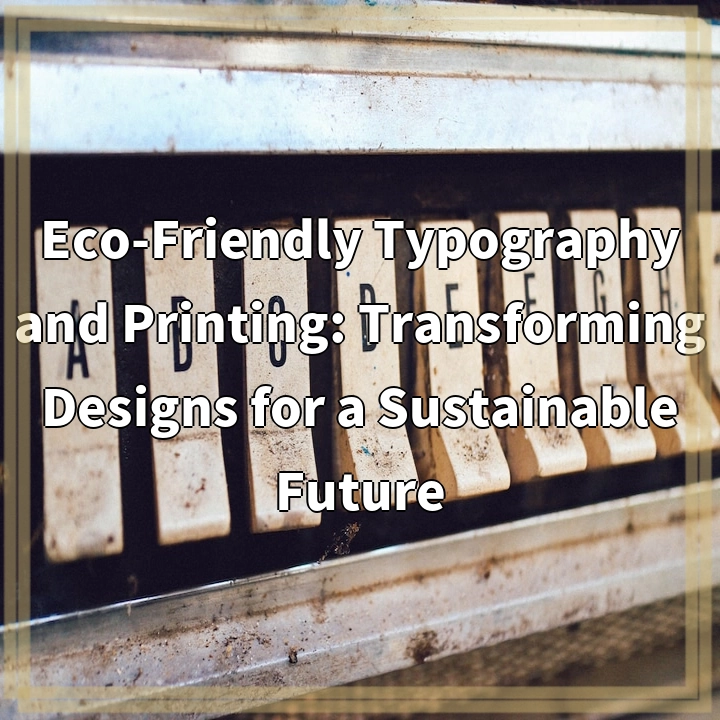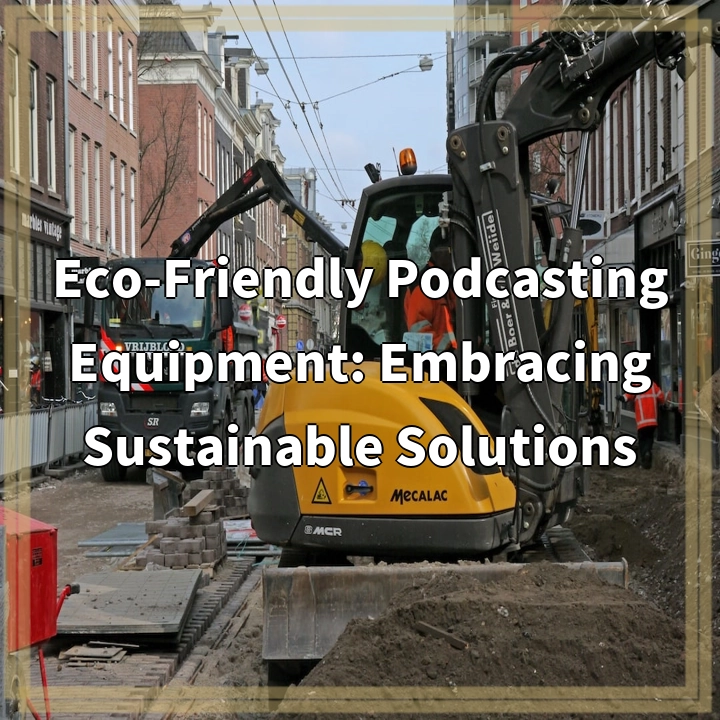
What is Eco-Friendly Typography and Printing?
Eco-friendly typography and printing refers to the use of sustainable practices and materials in the design and production of printed materials. It involves making conscious choices to minimize environmental impact throughout the entire process, from selecting typography and design elements to choosing printing methods and materials.
Real-World Problems Associated with Eco-Friendly Typography and Printing
While the traditional printing industry has been a major contributor to pollution and waste, eco-friendly typography and printing aim to address these issues. Here are some real-world problems associated with the industry and how eco-friendly practices can help mitigate them:
1. High Carbon Footprint:
Traditional printing processes rely heavily on fossil fuel-based energy sources, resulting in high greenhouse gas emissions. This contributes to climate change and air pollution. By adopting eco-friendly practices such as using renewable energy sources and implementing energy-efficient technologies, the carbon footprint can be significantly reduced.
2. Deforestation and Resource Depletion:
The production of paper for printing involves the cutting down of trees, leading to deforestation and habitat loss. Additionally, the extraction of natural resources for ink production contributes to resource depletion. Eco-friendly typography and printing promote the use of recycled and sustainably sourced paper, as well as vegetable-based inks, to reduce the ecological impact on forests and ecosystems.
3. Chemical Pollution:
Conventional printing processes often involve the use of toxic chemicals, such as volatile organic compounds (VOCs), which can be harmful to human health and the environment. Eco-friendly printing aims to minimize the use of such chemicals by adopting water-based or soy-based inks, which are safer and less polluting.
4. Waste Generation:
The printing industry generates a significant amount of waste through discarded materials, such as misprints, excess ink, and trimmings. Eco-friendly practices include using digital prepress technologies to minimize waste, recycling paper waste, and implementing efficient recycling systems for other printing byproducts.

Solutions for Eco-Friendly Typography and Printing
To address the real-world problems associated with eco-friendly typography and printing, several solutions can be implemented. These solutions aim to minimize the environmental impact of the printing industry and promote sustainability in design and production processes.
1. Embracing Digital and Online Platforms
One solution is to shift towards digital and online platforms whenever possible. By adopting digital typography and design tools, the need for physical printing can be minimized or eliminated. This reduces paper consumption, energy use, and waste generation.
2. Using Sustainable and Recycled Materials
Another solution is to choose sustainable and recycled materials for printing. Using recycled paper can help reduce deforestation and minimize the demand for new paper production. Additionally, selecting alternative materials like bamboo or hemp can further reduce the ecological impact.
3. Adopting Renewable Energy Sources
Using renewable energy sources, such as solar or wind power, for printing operations can significantly decrease the carbon footprint of the industry. By shifting away from fossil fuel-based energy, the environmental impact can be reduced, contributing to a more sustainable future.
4. Implementing Water-Based or Soy-Based Inks
Replacing conventional inks with water-based or soy-based alternatives can mitigate the chemical pollution associated with printing. These environmentally friendly inks have lower levels of volatile organic compounds (VOCs) and reduce the release of harmful toxins into the air and water.
5. Minimizing Waste and Implementing Recycling Programs
Efforts should be made to minimize waste generation throughout the printing process. Implementing efficient recycling systems for paper waste, properly managing and recycling discarded materials, and using digital prepress technologies to reduce misprints and excess ink can all contribute to waste reduction.















